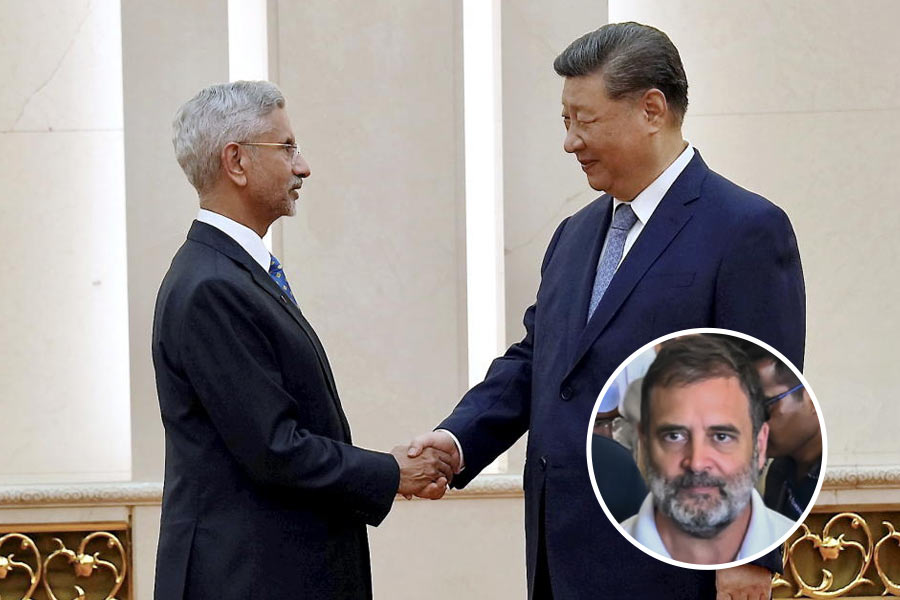GEM IN THE LOTUS:
THE SEEDING OF INDIAN
CIVILISATION
By Abraham Eraly, Viking, Rs 495
This is not a history of the Indian civilization. Rather, it is an overview of the times from the Indus Valley civilization to the 'clockwork state' of the Mauryas. Thus it cannot be read as a chronicle of dynasties or even events which changed the course of history. The emphasis, as the book unfolds, is more on teachings - of Buddha and the thoughts contained in Kautilya's Arthasastra. The author has obviously taken Romila Thapar's plea to look at 'regional history from a comparative perspective as well as its integration into the history of larger areas' very seriously. In the process, the author has given the lay reader an enjoyable insight into the culture of the Indus Valley, the Vedic times, Alexander's forays in India and the orderly states of Asoka and Chandragupta Maurya.
'In the beginning there was no India. All the landmass of the earth then lay huddled together in protocontinents in the lap of the idling primeval sea. Around 170 million years ago this cluster of continents began to break up and drift apart... Eventually...it docked into the soft underbelly of the sprawling Asian landmass, to become the land that would be known many eons later as India' is how the book begins. The author details the physical features of the country before speculating on the evolution of the early man in India and his racial make-up. Abraham Eraly believes that prehistoric Indians were definitely a polyglot people.
Moving on to Mohenjo-Daro and Harappa, the author tries to recreate the times and tells us the fascinating story of the finding of the sites. The twin cities were not rustic settlements, but were built according to well-established precepts of town planning. The civilization ultimately decayed and the cities were overrun 'most probably by Aryans, in the middle of the second millennium BC'.
Eraly draws on the Rig Veda in support of the Aryan invasion and presents a number of extracts from hymns which give glimpses into religious beliefs and the conditions in those days. The author notes that the 'Vedas, though scriptural works, are a cornucopia of data on life in ancient India.' However, the Vedas came down by oral tradition and were written much later. Even the dates of these scriptures can only be conjectured. The philosophical tenets of the times are discussed in detail and should be of interest.
Much of the book deals with ancient philosophies and the proponents of major philosophical streams like Mahavira and Buddha. In doing so, the author does his readers a service for at no time can the understanding of India be separated from its religious beliefs.
The author is on surer ground when he moves on to the empires on which more source materials are found, as in the case of Magadh. It is Alexander in India who really draws upon the imagination. The author follows Alexander and his conquests right upto his departure from India. It is one of the quirks of history that 'India would soon forget Alexander entirely, just as it would forget Porus and many others of its own great kings, preferring to honour mythical rather than real heroes.'
It has been said that in India temples to the gods endure while the palaces of great rulers are swallowed up by time. Thus no trace remains of the great towers built by Alexander on the Beas. And though Porus was well known to Europeans, he was entirely unknown to India till recent times. Alexander's campaign may not have found a place in ancient Indian history, but his conquest had a far-reaching impact. For one, it provides historical information as opposed to myths. Following Alexander's India invasion, the country's trade with the West expanded and this led to greater prosperity and urbanization. Above all, it 'facilitated the establishment of the Mauryan empire.'
A look at Chandragupta Maurya's reign brings into focus Kautilya, the king's Brahmin advisor, who is supposed to have masterminded Chandragupta's rise to power. Kautilya's Arthasastra deals with just about every aspect important to a king.
It is but natural that this work which encompasses the Mauryas should focus on Asoka. It is here that the author could have given his readers a more exhaustive picture. Given the details of other events, the Kalinga campaign in particular, seems to be sketchy. Yet we know that this campaign was so meticulous that it has often been compared to the moves in a game of chess.
On the whole though the book appears to be readable. It provides a wealth of information on diverse topics. Anyone hoping to get familiar with ancient Indian times should take a look at it.
 Tuesday, 15 July 2025
Tuesday, 15 July 2025









